While PPC and social media advertising can work wonders, driving folks to your site and converting them into customers, let’s be honest — this success lasts only as long as you pay dollars for your campaigns.
However, marketing-savvy businesses combine PPC and SMM with SEO content marketing, and they couldn’t be more right. Besides being way more affordable, SEO content development secures a long-term impact when done wisely.
The result doesn’t happen overnight — you need to have a robust SEO content marketing strategy in place to make the most of your website optimization. If you’re wondering where to start and what steps to take to create a winning SEO content strategy, read this article to the end.
I’ll teach you how to create an SEO content strategy that is sure to deliver impactful and stable results. Let’s get down to business.
SEO Content Strategy Explained
While SEO (search engine optimization) encompasses a broad set of website optimization practices, from making your site mobile-friendly to enhancing your Domain Authority, an SEO content strategy focuses on high-quality content creation.
Essentially, this is the process of planning and producing content in a way that increases your website’s ranking in search results, and, ultimately, drives more organic traffic and boosts conversions.
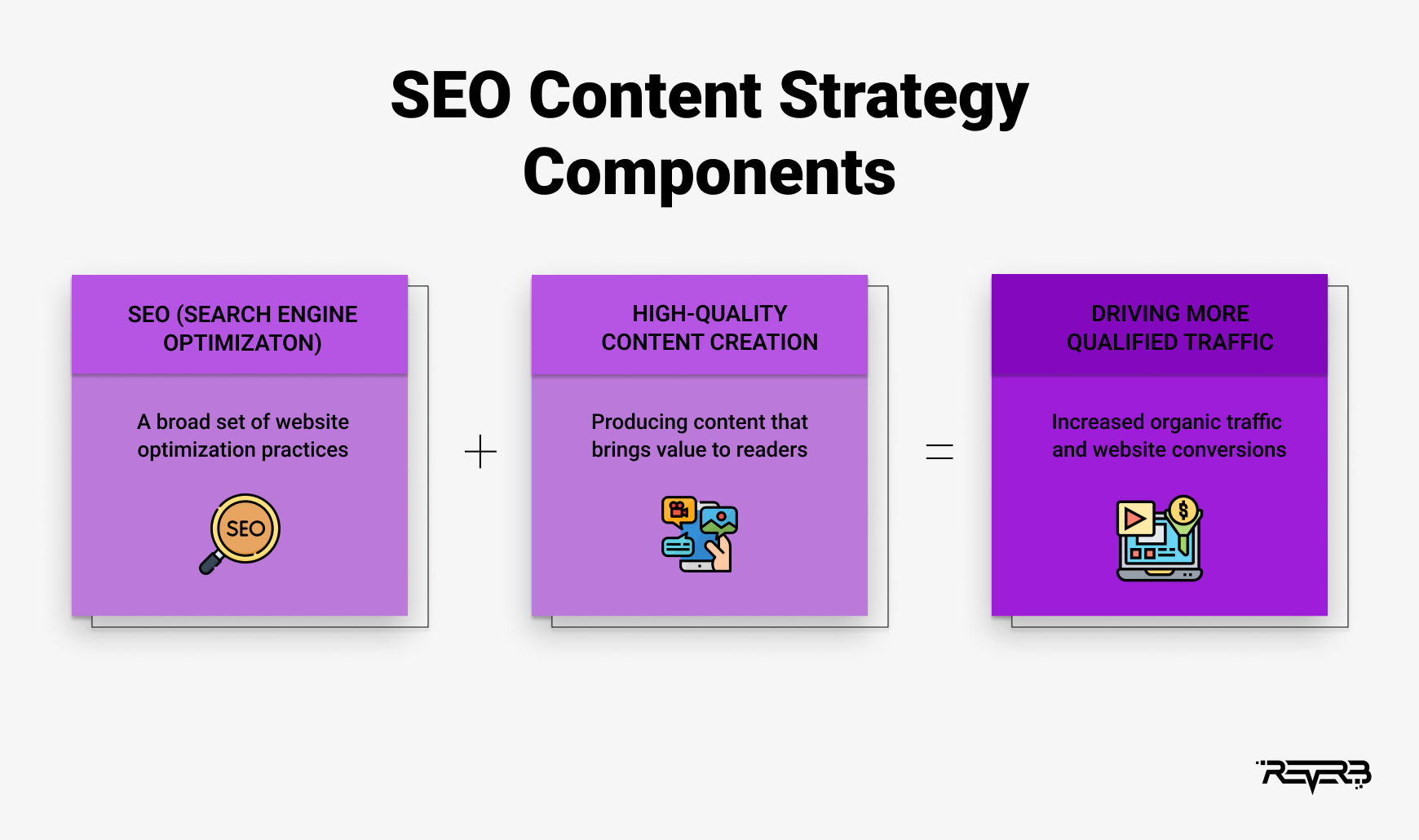
How To Create An SEO Content Strategy From A To Z
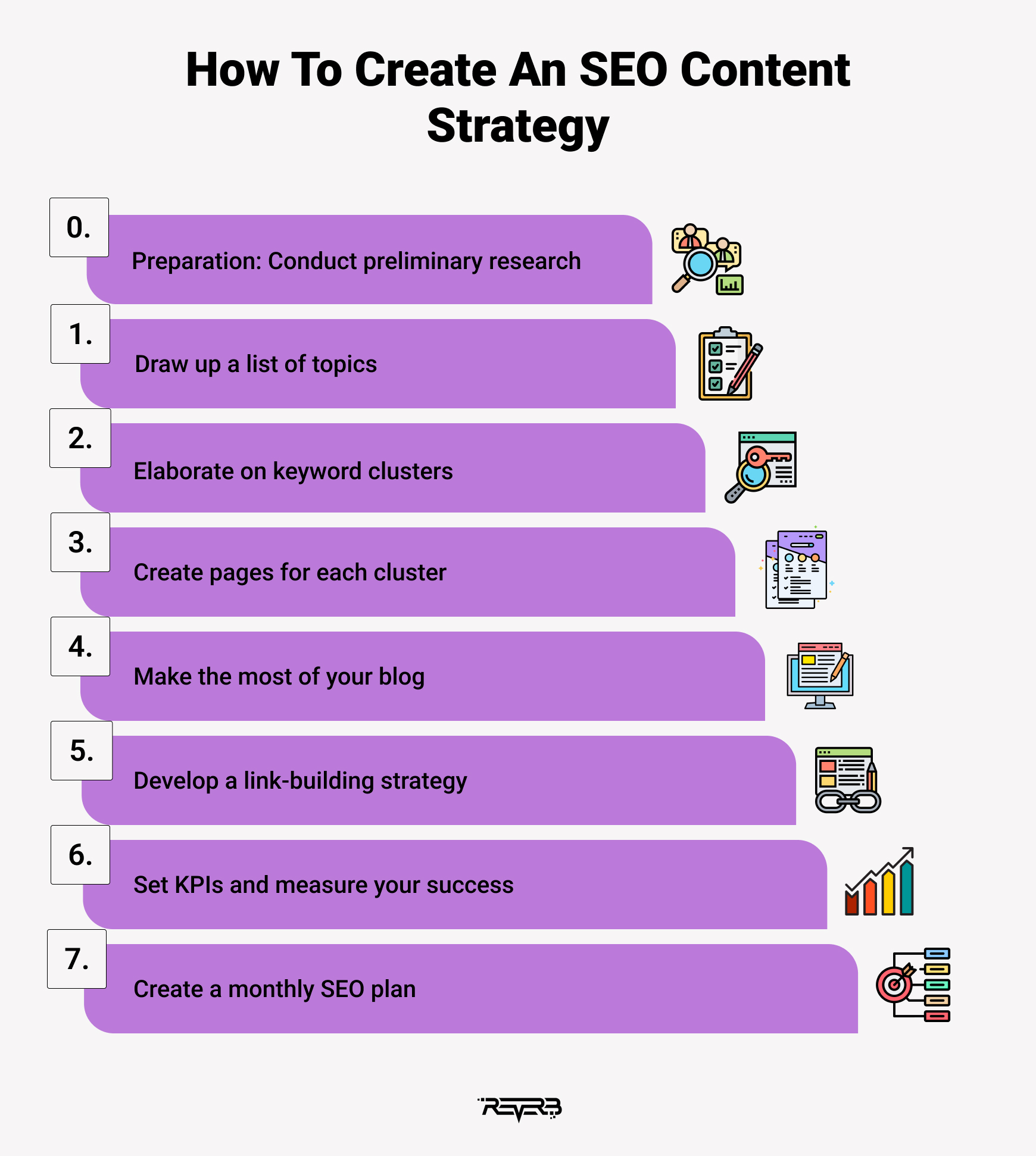
Preparation: Before you start building your SEO roadmap strategy
It’s important to realize that SEO-powered content is not solely about keyword selection — it is also focused on delivering value to your users. The only way to make sure your content is valuable is to understand your target market, audience, and your brand’s position.
Below are the essential research components that will help you better prepare your SEO content development:
- Buyer persona — understanding this will help you craft relevant content that addresses your audience’s priorities and pain points, and achieve better ROI in the long run.
- Value proposition — why should people choose you over others? Make sure this idea persists across your content.
- Competition — this will give a plethora of valuable insights; for example, you can research which topics on competitors’ websites perform best and worst, saving yourself time and money.
Step 1. Draw up a list of topics
A viable SEO content strategy for a website starts with drawing up a list of topics you want your blog to address.
As a rule of thumb, think of 10 words related to your product or service and analyze their performance with the help of an SEO tool, such as Google’s Keyword Tool or Ahrefs. Pay attention to these terms’ search volume and explore other related short-tail keywords that would make sense for your brand — they can go a long way toward reinforcing your primary keywords and improving your rankings.
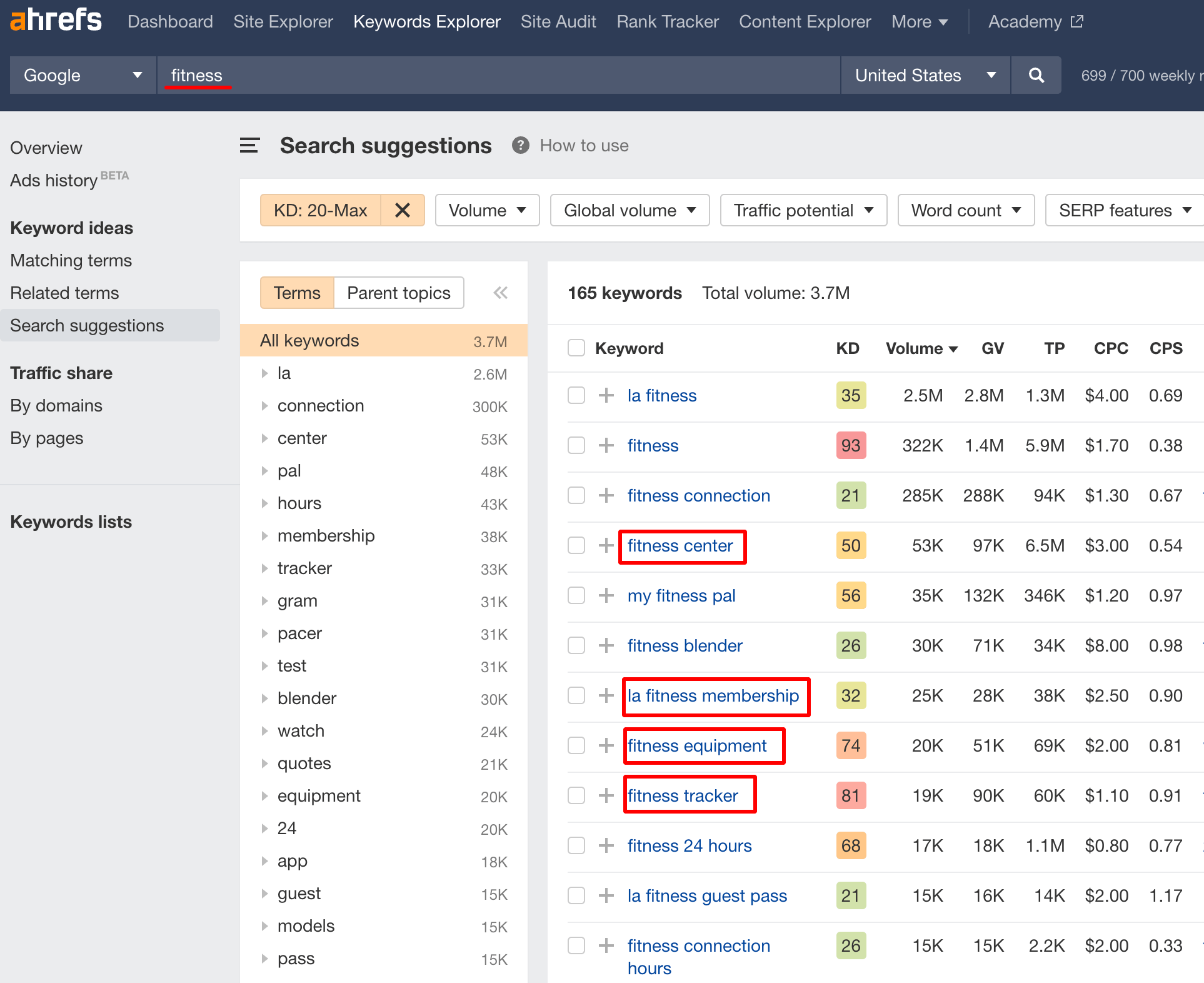
Overall, you should come up with 10–15 short-tail keywords with the highest search volume indicators. They are known as the pillars that will serve as a foundation for building larger clusters of long-tail keywords and topics.
Step 2. Elaborate on keyword clusters
This step of content strategy for SEO involves optimizing your pages for specific keywords. You can use the same keyword tool to identify long-tail keywords that go a bit further than your pillar term. Ten will suffice. Long-tail keywords make up a cluster around a pillar topic.
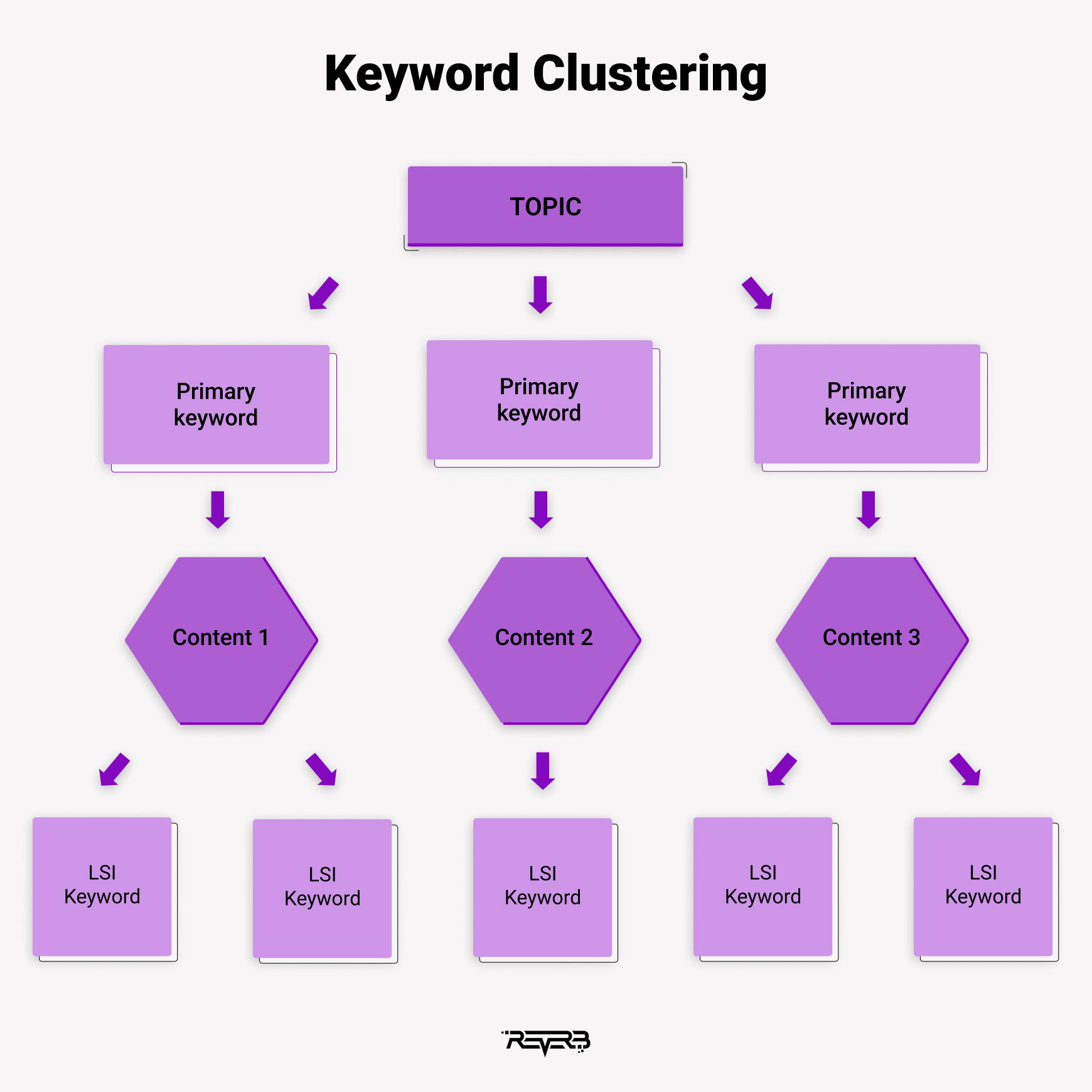
Why should you do this? First, it’s very hard to get good rankings on Google when you focus on a broad term such as “app development” or “women’s shoes.” On top of that, if you create many pages that target the same term, you risk suffering from keyword cannibalization when you’re competing with your own content. On the flip side, gathering relevant keywords around your topics will allow you to attract audiences with various interests through multiple entry points. At this stage, understanding the pros and cons of SEO is helpful. While SEO boosts organic traffic, it also requires time and continuous effort. Keeping this in mind will help you build a stronger keyword strategy.
Once your keyword clusters are organized, you can use them to create SEO content for your blog and product/service pages.
Step 3. Create pages for each cluster
Get this: packing a single page with all keywords could be your deadliest mistake — the page can end up ranking for none of them. Instead, for each cluster, create a page that provides a broad overview of the topic using the long-tail keywords.
Ideally, the number of topics and pages should coincide with the number of products or services you offer. This will enable your potential customers to easily find you on Google regardless of the terms they type into the search box.
For example, if you sell women’s shoes, it would be wise to make separate pages for leather shoes, classic shoes, pump shoes, red shoes, etc., even if these categories overlap. People tend to look for more specific products.
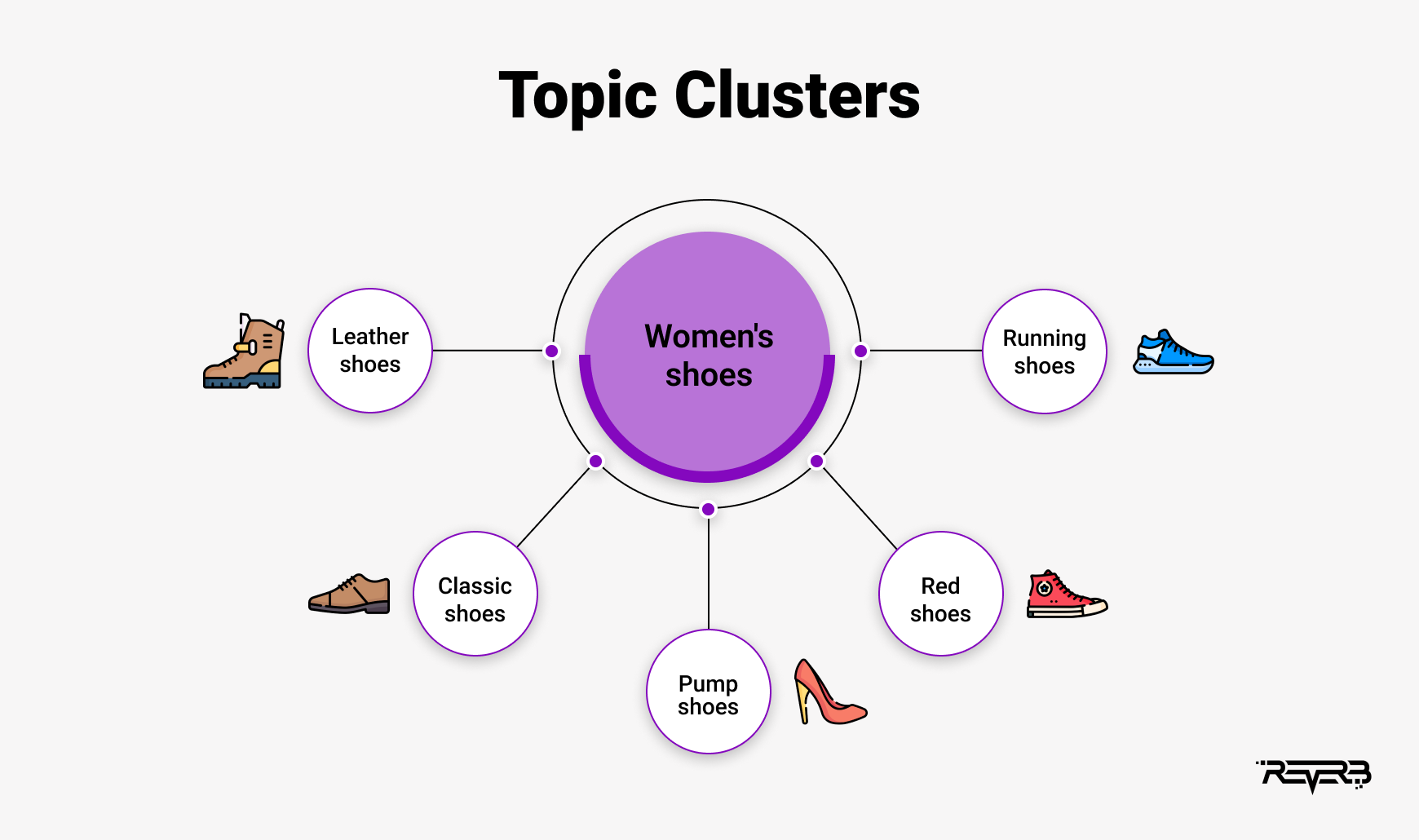
A word of advice: craft compelling meta descriptions for each page to encourage users to click on them. A meta description is a snippet of text, around 160 characters, placed below the title on the search results page. Include your main keyword in the description and make sure it is relevant to the content of the page.
Step 4. Make the most of your blog
SEO content creation shouldn’t be limited to product pages — your blog is a must-have channel to drive more relevant traffic and qualified leads, as long as you approach it with SEO in mind. So if you don’t have a blog, plan to start one as soon as possible.
When planning your blog, consider the following:
- Writing a blog for the sake of a blog doesn’t make any sense. Remember that your posts should deliver value to your target audience, solving their pain points and providing answers to their questions. You can get worthwhile SEO content ideas by exploring forums and related social media groups, or taking advantage of specialized SEO tools and Google Suggest.
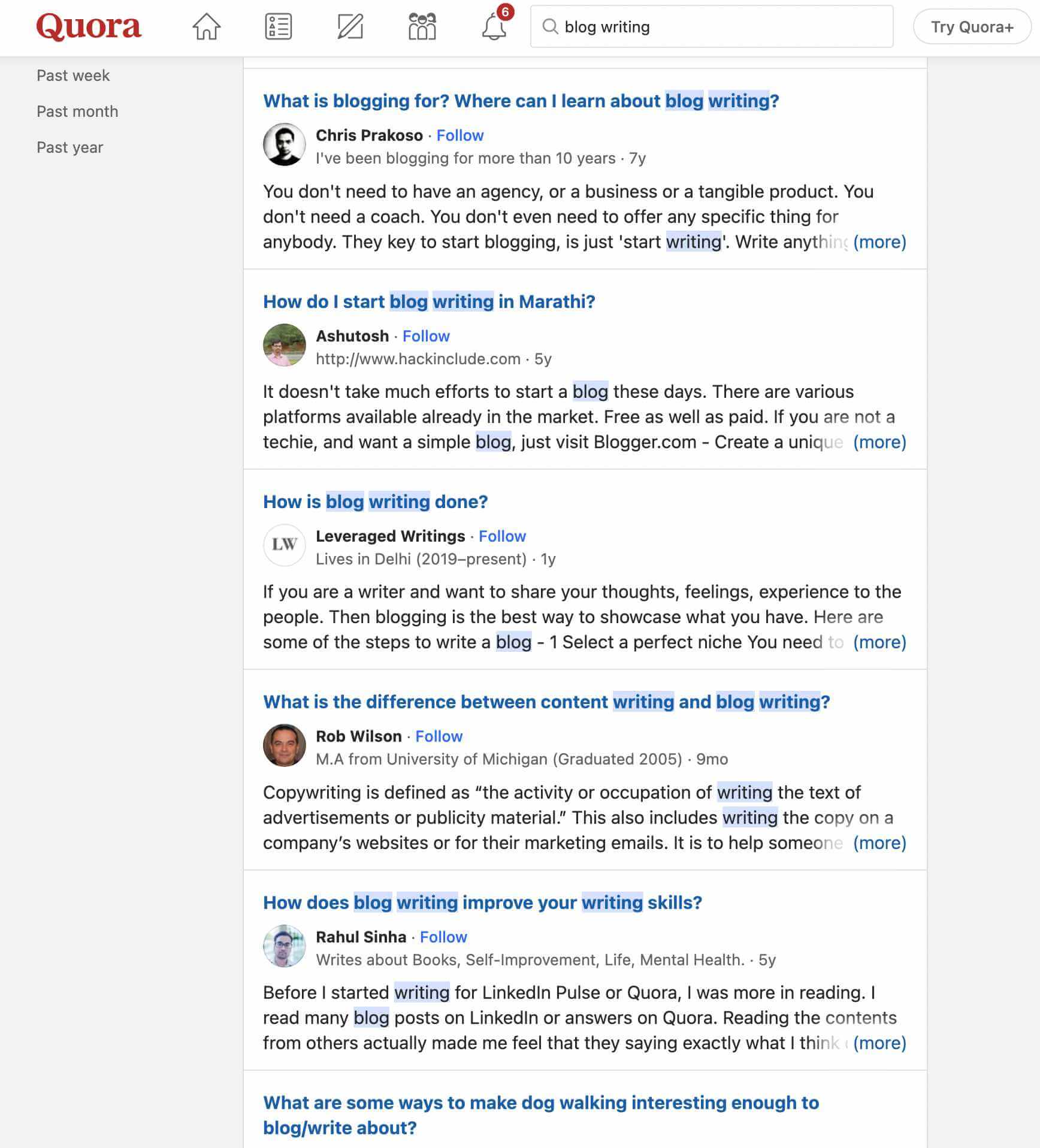
- Let each post focus on one keyword cluster, but avoid adding any long-tail keyword more than three times in your post. This can make your post less enjoyable to read. And more importantly, if your keyword appears too frequently throughout the text, it might be flagged as keyword stuffing by Google, which means your page will be removed from search results.
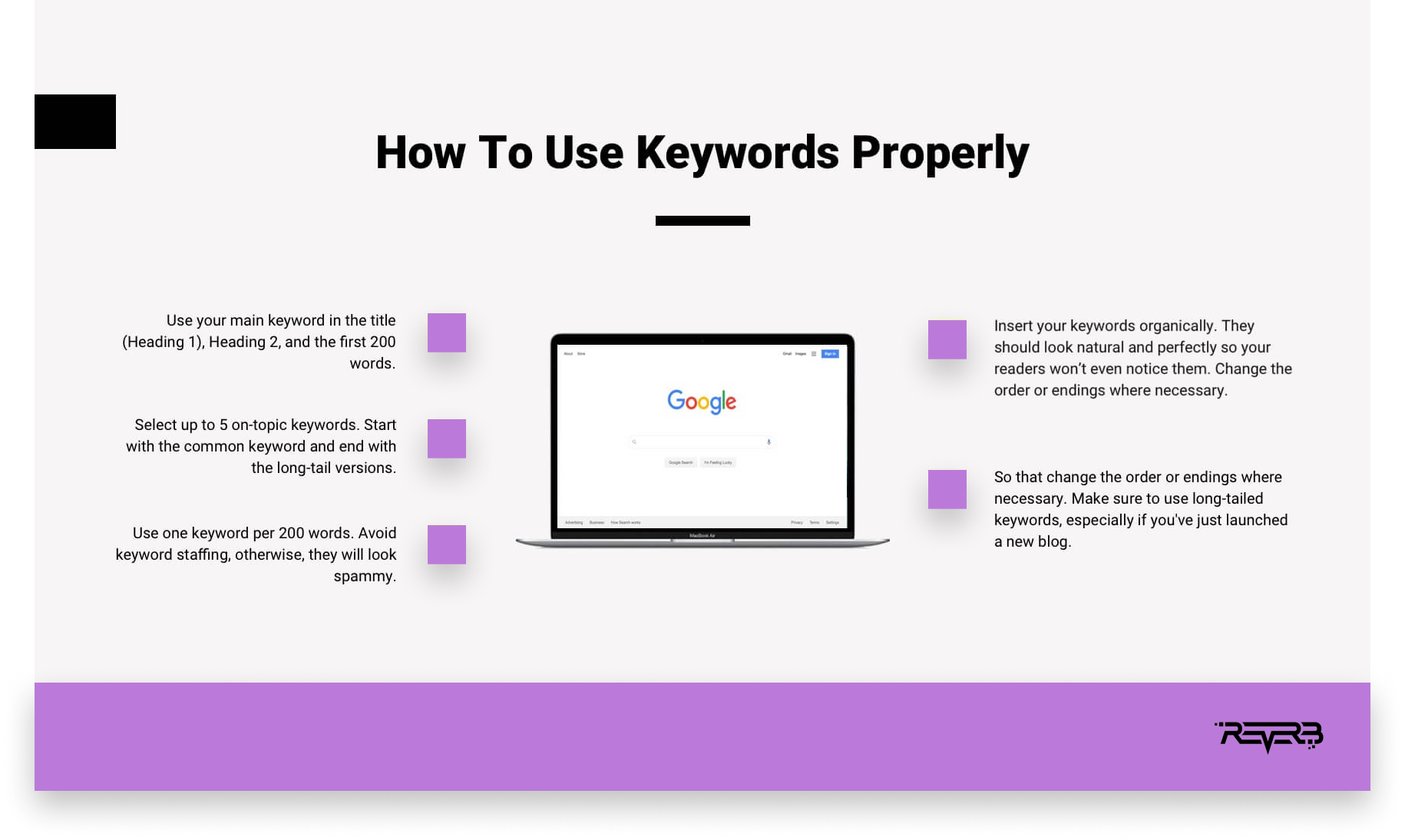
- Make sure your blog posts link out to the pillar pages you’ve created for your topics, either in the form of tags in your CMS or as anchor text. This will help Google algorithms understand that there’s a connection between the long-tail keyword and the broader topic you’re seeking to rank for. It will also increase your site’s session duration metric.
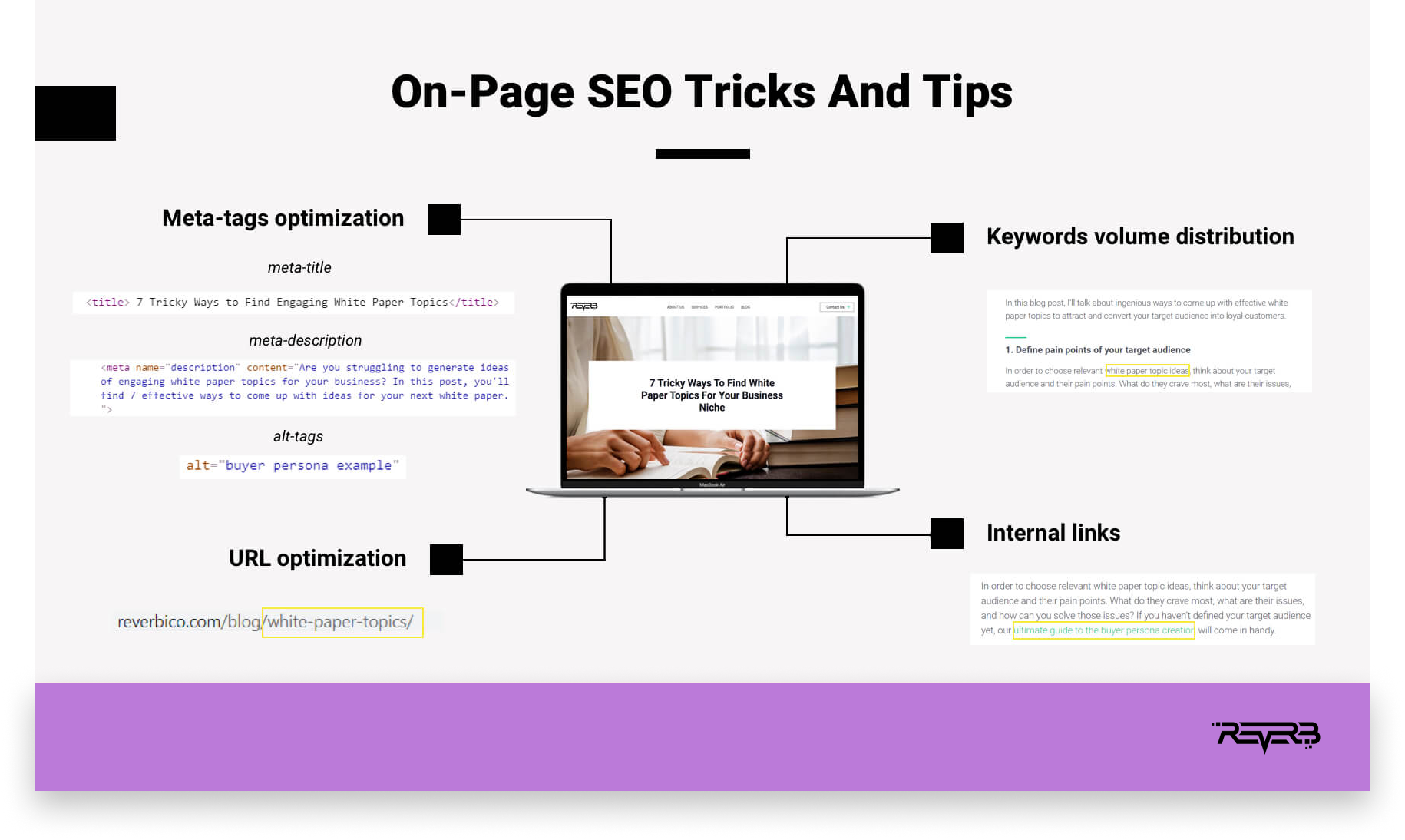
- Release new posts regularly and promote them. Even when you’re done with all of your long-tail keywords, don’t stop exploring fresh SEO content ideas and writing quality pieces. It makes sense to establish a blogging schedule; for instance, release new posts once or twice a week, and map out a solid content strategy to stay consistent and focused on your objectives. And yes, don’t shy away from promoting your content — it can go a long way toward reinforcing your SEO efforts.
Step 5. Develop a link-building strategy
Now that you’re familiar with the best practices to improve your on-page SEO, let’s take a look at another crucial aspect of search engine optimization that is related to content planning: link building.
This is the practice of attracting backlinks to your site from other sources; the higher their Domain Authority, the better. The content itself won’t bring you prominent results. To drive organic traffic and make your web pages and blog posts work, you must reinforce them with regular link building.
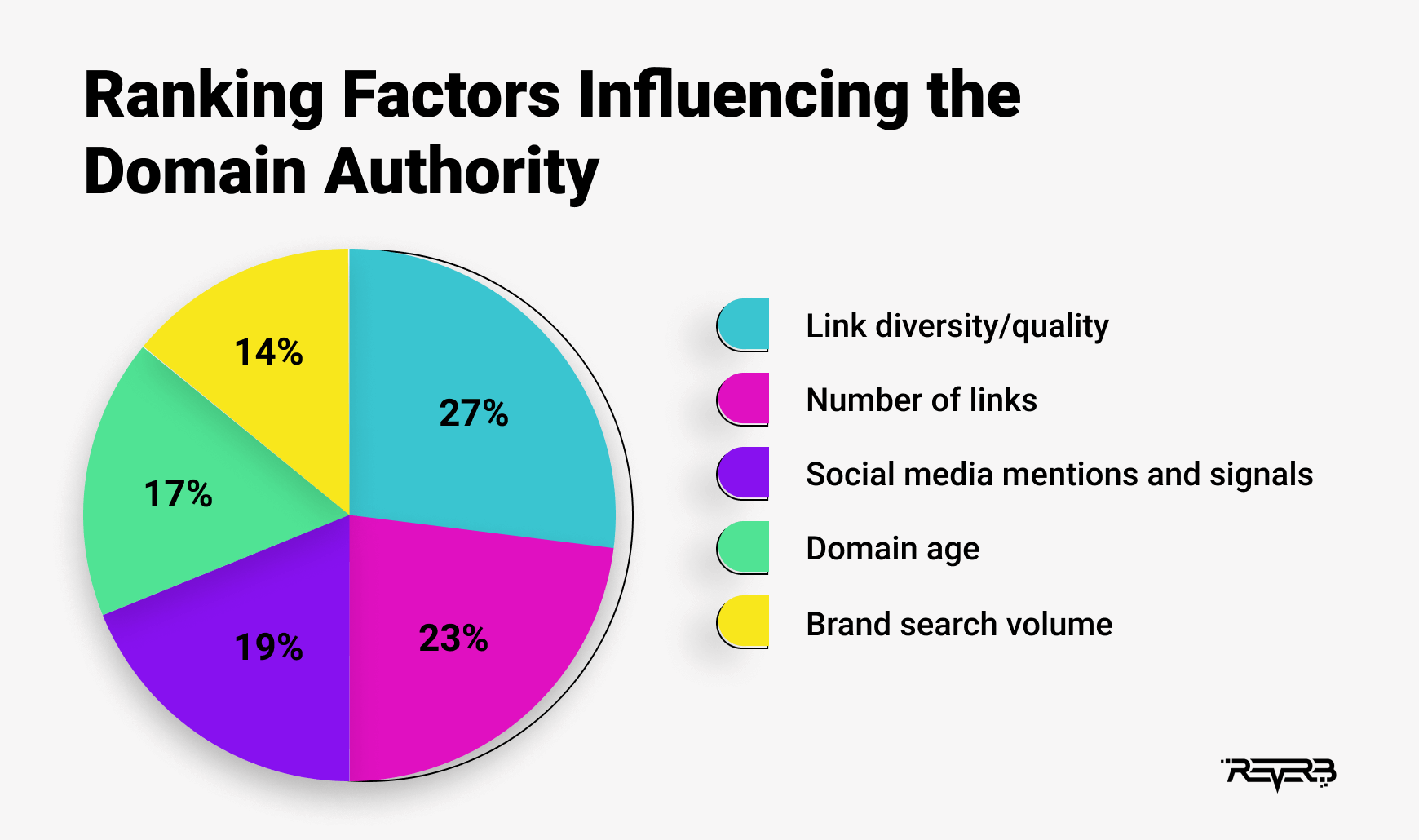
Together with content creation for SEO, link building helps your website rank higher, so you should make sure to include it in your monthly SEO plan.
Here are some tips on where to start:
- Take advantage of niche directories. List your site in directories that best match your business profile, your target audience, and your target location.
- Get in touch with the representatives of other related blogs and offer guest posting, i. e., publishing your article on someone else’s website. Make sure your piece delivers value to the donor’s target audience and, of course, includes anchor text with a link to a relevant page on your website.
- Encourage your customers to leave testimonials on review websites.
Step 6. Set KPIs and measure your success
SEO takes time and effort, so it’s critical to keep track of your progress. With the help of KPIs, you’ll be able to see whether your SEO campaign strategy works and easily spot potential growth areas.
Use your favorite analytics tool to monitor organic traffic (including mobile organic traffic), organic impressions, average time on page, session duration, bounce rate, keyword rankings, branded search volume, backlink referral traffic and quality, Domain Authority, etc. — all these metrics will give you valuable insights on what you can do to achieve better results.
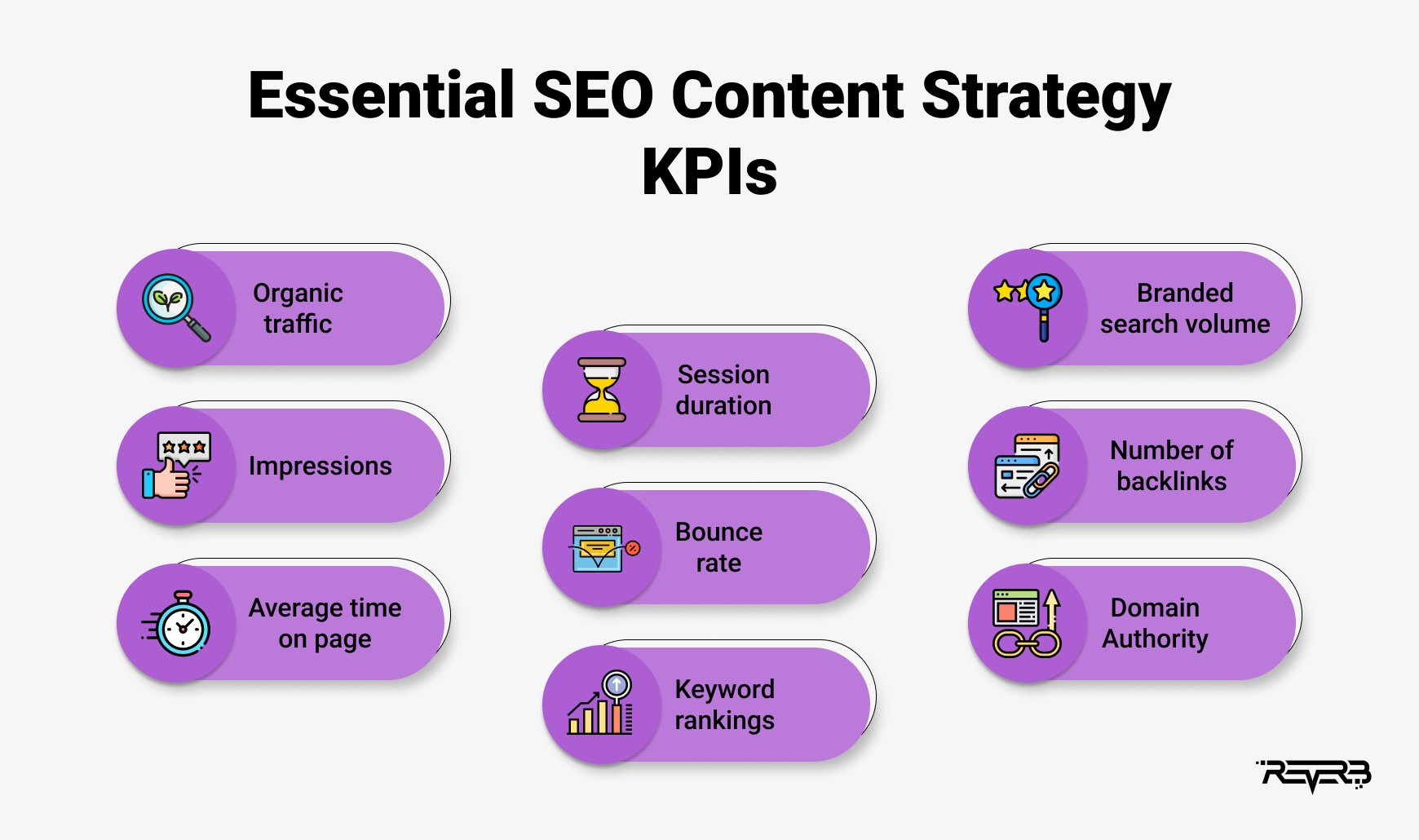
Step 7. Create a monthly SEO plan
Effective search engine optimization is an ongoing process. Professional SEO content strategists make monthly SEO plans and strictly follow them.
Here’s an SEO planning template you can use to ensure the consistency of your SEO efforts.
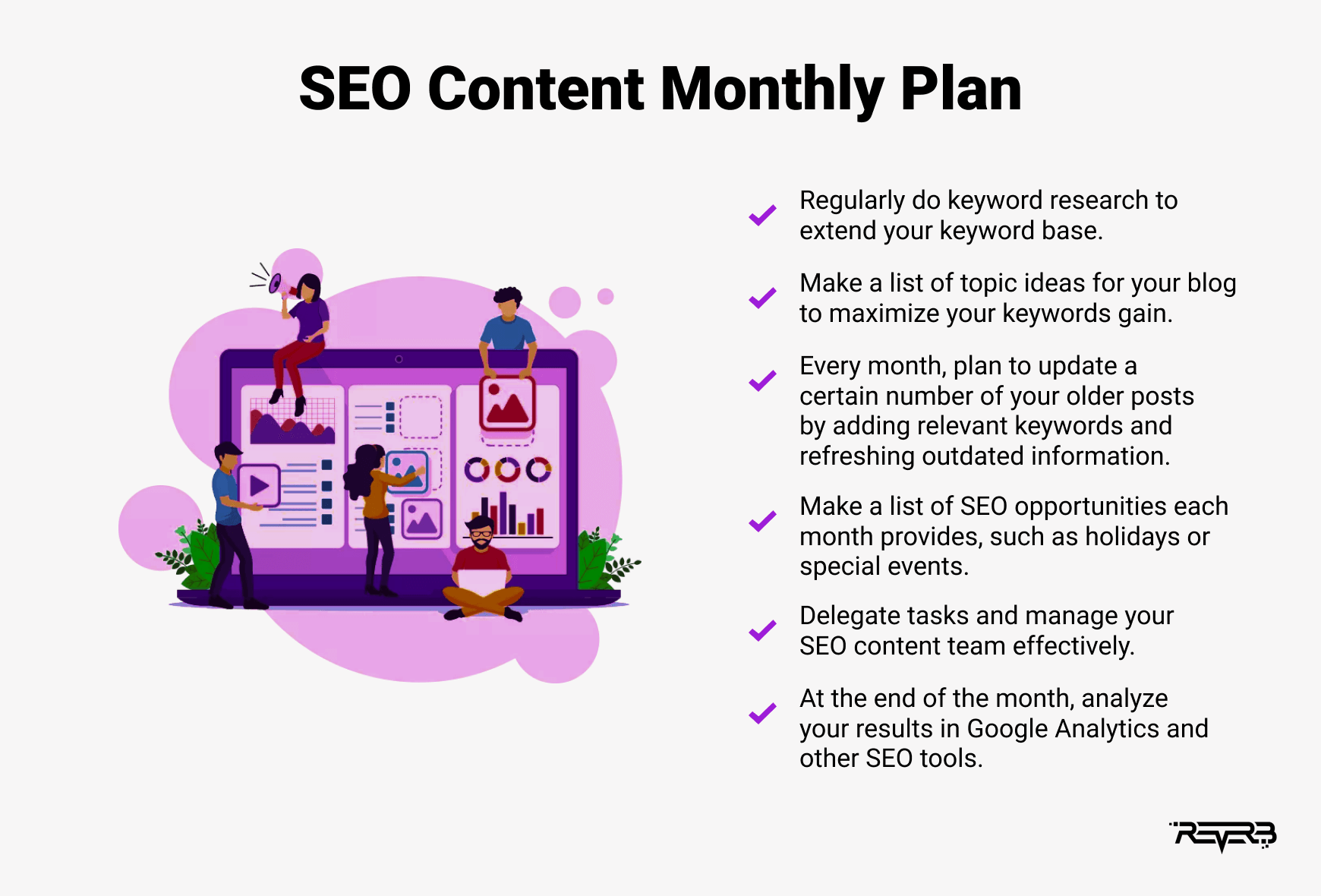
- Regularly do keyword research to extend your keyword base. This is important since trends and user needs tend to change over time. What’s more, Google appreciates sites that frequently add new web pages.
- Make a list of topic ideas for your blog to maximize your keywords gain. Ideally, you should plan a month in advance, turning SEO content ideas into exciting articles.
- Every month, plan to update a certain number of your older posts by adding relevant keywords and refreshing outdated information. This practice is incredibly popular with professional SEO content strategists — it allows websites to drive plenty of new traffic without breaking the bank.
- Make a list of SEO opportunities each month provides, such as holidays or special events.
- Delegate tasks and manage your SEO content team effectively. Make sure you set deadlines that allow your writers to create quality content while designers prepare the visuals, so again, plan everything at least one month ahead.
- At the end of the month, analyze your results in Google Analytics and other SEO tools to make conclusions about your progress and adjust your strategy appropriately.
Conclusion
Search engine optimization is a challenging and time-consuming process, but it’s definitely worth it. As you can see, SEO and content planning shouldn’t be anchored solely in keywords, since you risk failing to meet your business goals this way. Instead, it’s important to tailor a thoughtful SEO strategy and create SEO content that will help you drive impactful results.
If you don’t have the time or expertise to work on an SEO strategy yourself, you can always turn to ReVerb. The team of professional SEO content strategists and writers at ReVerb will help you create a solid SEO content strategy, from the initial planning to a monthly SEO plan to the implementation of your future marketing campaigns.
















